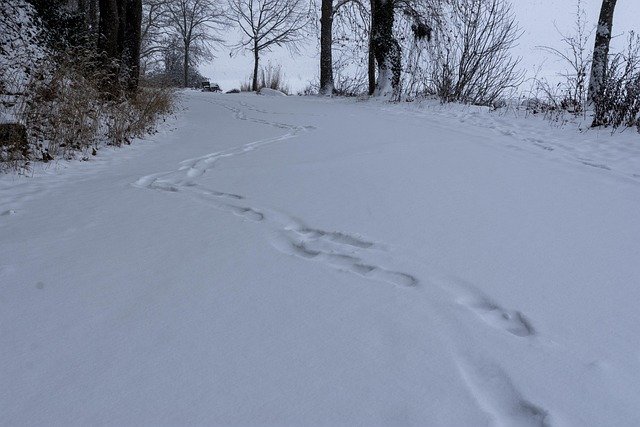Trauma therapy: Life beyond the freeze response
“Animals do not view freezing as a sign of inadequacy or weakness, nor should we.” ~ Peter A. Levine
The experience of trauma can overwhelm us, leaving us feeling helpless and unable to move forward. When faced with danger, our bodies instinctively respond in three ways: fight, flight, or freeze. Unfortunately, the freeze response can cause long-term damage to our emotional and physical health.
Trauma therapy is a powerful means of restoring health and reclaiming life after trauma. By understanding the freeze response and learning how to move beyond it, individuals can find hope and healing in the aftermath of traumatic events.
Fight, Flight, and Freeze
Most of us are familiar with our physiology's fight and flight responses. Stephen Porges, Ph.D., revolutionized our understanding of trauma and PTSD by discovering another aspect of our nervous system, the parasympathetic branch of the nervous system, which is responsible for the freeze response.
It turns out that the freeze response is significant in understanding why we get stuck in trauma reactions.
What is trauma?
Peter Levine, the creator of Somatic Experiencing, says trauma occurs when our ability to respond to a threat is overwhelmed. This results in an incomplete fight, flight, or freeze reaction.
An automatic survival response arises in our physiology when we meet a threat. We may want to run or fight. When this isn't possible, our physiology will go into a conservation shock state to help us to survive.
And, we humans often get stuck in this conservation state that we know of as 'freeze.'
A freeze reaction does not have to become trauma -- but when it isn't discharged, it hijacks our physiology and becomes PTSD.
Animals in the wild don't suffer from trauma
Interestingly, animals in the wild, even though surrounded by predators, rarely, if ever, get PTSD.
If they are not faster or stronger than a predator, they will go into a freeze immobility response that allows them to become less visible and less attractive to their predator.
If its predator leaves the scene, an animal will find a way to shake the accumulated survival energy from its previously frozen system and go on its merry way.
Why is it that we humans don't do the same?
If frightening sensations are not given the time and attention they need to move through the body and resolve or dissolve, the individual will continue to be gripped by fear. ~~ Peter A. Levine
What is freeze?
A freeze response is an automatic reaction of the body to a perceived threat. It is controlled by the parasympathetic nervous system and is mediated by the dorsal vagal complex. This ancient part of the nervous system is similar in humans and animals.
And yet, humans get stuck in a freeze response, and animals in the wild don't. For humans, our minds and cultural conditioning often get in our way of completing a freeze reaction.
When a person experiences a freeze response, their body will enter immobility, where energy is conserved as much as possible.
This response can take many forms, from minor changes, such as holding one's breath, to more extreme reactions, such as total paralysis. Movement is inhibited, emotional affect becomes constricted, cognition is limited, bodily processes slow down, and the voice lacks prosody.
Adaptive freeze responses
The freeze reaction aims to minimize the risk of being harmed in dangerous situations and can be an invaluable means of survival in times of crisis.
Suppose a child falls into a swimming pool. In that case, their survival is supported by their physiology going into a hibernation state, slowing down the use of oxygen, and conserving physiological reactions until rescue.
Despite this traumatic experience, they can often be revived without brain damage, thanks to the helpful response of the parasympathetic dorsal vagal branch of their nervous system.
Functional freeze
Most of us have experienced a freeze response at some time. Someone can have underlying frozen energy while functioning, even though somewhat compromised.
Suppose we don't have a way to release a shocking, frightful incident and return to a complete connection with our bodily and emotional experience. In that case, we may go forward in a numbed but functioning state, known as functional freeze.
Examples of inhibitory reactions underlying a functional freeze state include shallow breathing patterns, shyness, social anxiety, stress disorders, being highly sensitive, digestive problems, and feeling like a 'space cadet.'
A freeze reaction can follow something as commonplace as a child falling and being told to get up before they can fully express emotional and physical reactions, regroup, orient, and get their bearings.
What might have been a momentary freeze reaction (had the parent offered the child more time to express shock and pain with safe support) doesn't have a chance to complete and remains in the physiology.
In a home with an angry parent without options to fight or flee, a child will often adapt by conserving energy -- breath holding, anxiety, digestive issues -- in a functional freeze state.
With childhood trauma in a violent home, it is adaptive to become small and invisible so as not to provoke aggression. A child may adopt protective postures, including hypervigilance, tight muscles, or, if extreme, a more collapsed and helpless state— these often become conditioned and habitual.
In addition, accidents, medical procedures, and other life situations may send the physiology into a freeze reaction, where it gets stuck.
More severe symptoms
With prolonged functional freeze more severe symptoms emerge including severe digestive issues, chronic fatigue, fibromyalgia, sleep apnea and migraines.
Behaviorally, you might experience being an exercise-oholic, various addictions, and more. You may also work hard to manage the challenging, stored activation in your nervous system by going non-stop and then collapsing into sleep.
Therapy helps us to understand and heal. Trauma-informed treatment can provide relief from the debilitating symptoms of trauma.
What happens in our physiology?
The freeze reaction is like a shut-off valve that stops our brains and nervous systems from taking on additional things to process. This hibernation mode puts the brakes on more input coming in and keeps the system from collapsing.
The freeze reaction is anesthetizing and curtails sensation, emotion, and movement access. It puts aspects of our physiology on hold so our brains can maintain stability. To work in a compromised way is better than falling apart.
A freeze response loses its usefulness when it stays with us long past the initial threat without discharge. Our natural impulses to fight and flee have become inhibited.
A prolonged freeze reaction will create chaos and disorganization in our nervous systems.
Our biological alarm system once went off when needed but has yet to be reset.
Trauma symptoms that need attention
Even as our physiology keeps us from being overwhelmed, we may simultaneously experience the backlog of sensations our nervous systems have worked to contain.
Often with a freeze reaction, you may feel that you are "off," disoriented, don't feel like yourself, and have a feeling of 'stuckness' and helplessness.
Many blame themselves for compromised functioning and develop a sense of shame. We wonder why we are reacting as we do. We ask ourselves, 'What's wrong with me?'
We may have difficulty feeling our bodily sensations, identifying our emotions, and feeling connected to our outer environments.
Steps in trauma healing
You can do many things to create your trauma treatment plan and begin your healing process.
Have empathy for yourself
If you've experienced trauma, you can begin by knowing it is not your fault. Our survival tendencies wire us to look for the source of the problem. In this case, your mind can conclude that you are to blame. In reality, you have an alarm system that needs to be reset. Self-compassion is essential.
Use your imagination
Using imagination can be helpful in healing. Studies of injured athletes showed that when they rehearsed skills via their imaginations, neural firing occurred that supported their return to their sport. Guided meditations, healing images, and imagining healthy reactions can be helpful.
Connect to your environment
You can intentionally connect to the surrounding environment with your senses. Feel your feet on the ground. Look around for neutral or pleasant sights, and listen for soothing sounds. Also, experiment with taste, touch, and smell in connecting positively with your surroundings.
Gentle movement
Movements such as gentle yoga, tai chi, relaxing walks, rhythmic dance, and other activities invite freeze reactions to transform into more useful energies.
Experience pleasure
Slow down and take time to find moments of joy and pleasure. Taste your food, enjoy the presence of a flower, and notice the support of your breath -- this counters the tunnel vision of the freeze reaction and expands your experience.
Align thoughts with positive experiences
A cognitive behavioral therapy strategy that you can use includes attending to your thoughts and purposefully going against the negative bias of your survival system. Instead of focusing on danger or something negative, you can intentionally look for thoughts aligned with positive pleasure experiences.
Reduce stimulation
A freeze reaction holds a lot of unseen activation. As we reduce stimulation, you can set the intention of no longer feeding this activation and give it room to transform. Lowering lights, reducing noise levels, creating space in your schedule, and decreasing worry are a few options.
Avoid substances
Many people avoid the discomfort of underlying freeze with substances: alcohol, cannabis, etc., to relax and caffeine or other drugs to amp up—experiment with finding different ways to get re-acquainted with your natural rhythms.
Slow down
Many people with trauma tend to live with high activation and fast-paced lives. Reclaim your life! Become curious about slowing down. Move slower and give yourself time daily to be with deeper parts of yourself.
Social engagement
Safe, reliable relationships can help us to utilize the more helpful ventral vagal part of our parasympathetic nervous system. Co-regulation with pets and people can be enormously helpful in getting out of freeze. (see blog on co-regulation)
Seek a trauma therapist
Experiencing a traumatic event can activate our fight, flight or freeze responses and lead to long-term symptoms. You can treat trauma.
Trauma-focused therapy can help you process your experiences and learn strategies to transform them. Somatic experiencing is a highly effective therapy that includes talk therapy with attention to bodily sensation, emotion, imagination, and cognitive processes.
With the help of trauma-informed psychotherapy, you can accelerate your healing. Contact me today to begin your journey of trauma healing.

